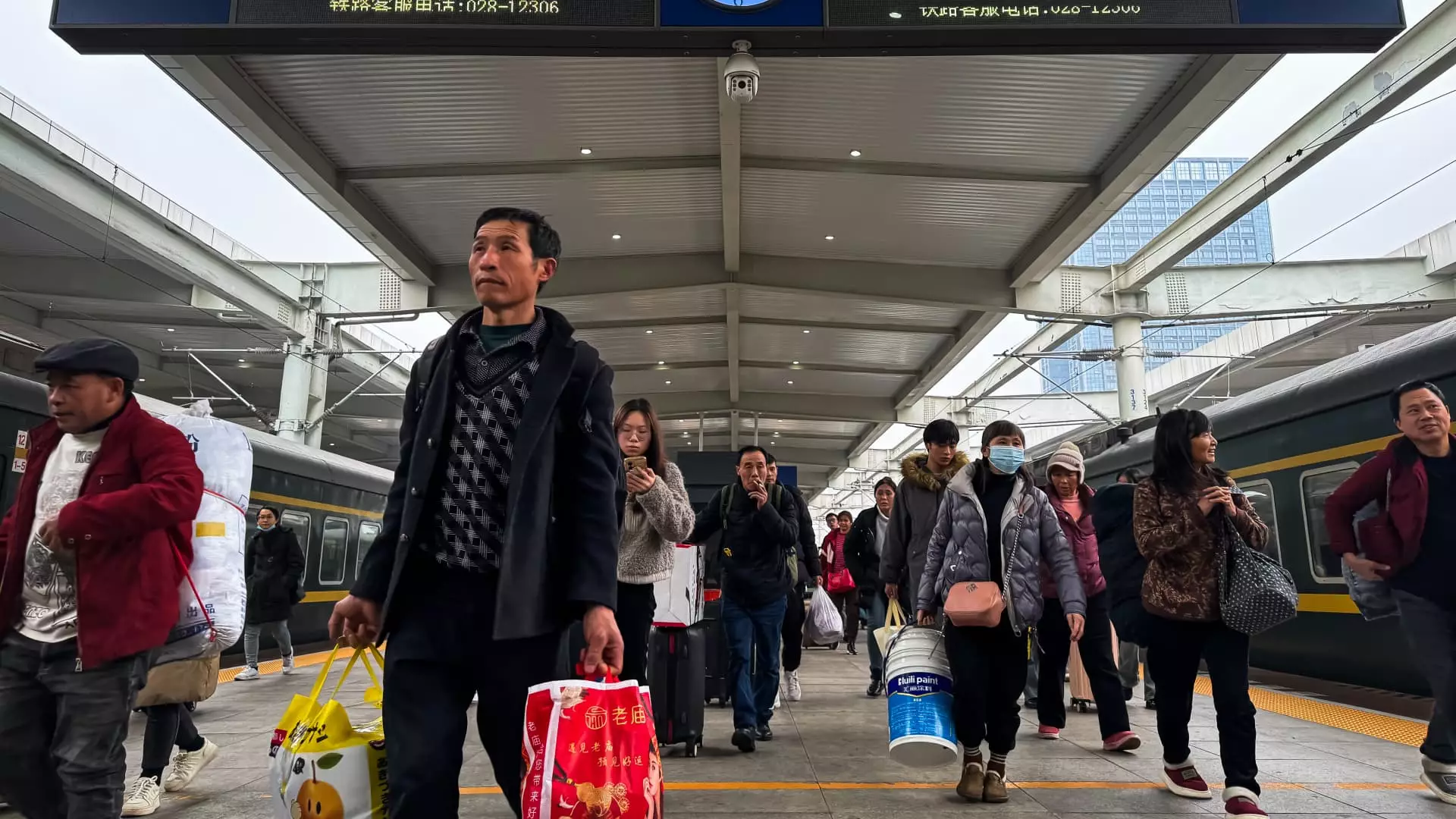The Chinese economy is at a crucial juncture where investors are waiting for meaningful signals of stabilization and growth. Despite recent efforts from the government to inject fiscal support through lower interest rates and stimulus announcements, analysts remain skeptical about the country’s economic prospects and the urgency required for recovery. The forthcoming official GDP figures for 2024 will be critical in understanding the country’s trajectory.
The Chinese government has taken initial steps to rekindle economic growth through broad fiscal stimulus measures, which include interest rate reductions. However, many believe that these measures are insufficient to combat the underlying issues that inhibit growth. A recent report from the BlackRock Investment Institute highlights the persistence of structural challenges in the Chinese economy, suggesting that economic recovery will likely be sluggish. The impending release of GDP data will be closely scrutinized, but preliminary indicators signal that domestic demand remains alarmingly weak.
Authorities are set to provide more information about their fiscal strategies during an annual parliamentary meeting scheduled for March. This announcement has generated some optimism among investors, yet the prevailing sentiment is that considerable caution is warranted due to prolonged weakness in consumer spending and deflationary concerns. This is underscored by a meager 0.5% increase in consumer prices—excluding volatile food and energy—marking the slowest growth in over a decade.
Different segments of the economy are feeling the weight of these economic constraints, particularly the commercial real estate sector. Significant downturns in property value and rental rates, alongside challenges in consumer occupancy in new shopping centers, tell a compelling story. For instance, high-end office rents fell approximately 16% last year, with forecasts suggesting further declines. These market dynamics present compelling evidence that recovery may be uneven across sectors.
Moreover, the downturn has been exacerbated by declining foreign investments and weak retail environments, as highlighted by Yin Yong, the mayor of Beijing. His observations reflect broader challenges as the city aims for modest consumer price inflation targets. Policymakers are gearing up to provide more targeted support, yet the question remains whether such measures will yield immediate benefits to consumer mindset and spending behavior.
To stimulate expenditure, the government announced a substantial investment in trade-in programs aimed at incentivizing consumer upgrading of appliances and electronics. The hope is that these subsidies will lead to an increase in recycling transactions and, consequently, boost product sales. However, the effectiveness of such policies remains a matter of debate. Experts from Nomura and ATRenew assert that while initial sales may experience a spike, the momentum may not be sustainable, especially given the current lethargy in the housing market, which significantly affects consumer goods spending.
Real estate developments have been particularly sensitive to government interventions, exacerbating caution among potential homebuyers. With property sales stuck at a decade-low, reliance on this sector remains a risk given its historical contribution to the overall economy. Concerns persist that without robust policy changes, the recovery in consumer demand may not align with the expectations set forth by officials.
Beneath these domestic challenges lies an additional layer of tension with the United States, which has influenced China’s strategic economic policies. The Chinese government has ramped up efforts to ensure national security by emphasizing self-sufficiency in key sectors, particularly technology. This approach is creating pressures for foreign businesses operating in China, forcing them to localize operations at a time when operational efficiencies may already be waning.
This backdrop sets the stage for a pronounced focus on bolstering consumer spending while simultaneously attempting to manage the complexities of a transitioning economy. The balancing act between enhancing security in essential sectors and stimulating financial growth illustrates the multifaceted nature of China’s current economic policy initiatives.
China’s economic outlook is embroiled in uncertainty as it navigates through a maze of challenges posed by slow consumer demand, structural issues, and international dynamics. The forthcoming parliamentary meeting may shed light on future fiscal strategies and provide clearer direction for economic recovery. Nevertheless, analysts emphasize that optimism must be tempered with caution, as the path to stabilization will require comprehensive and sustained efforts across multiple fronts. Whether the government’s envisioned stimulus measures can genuinely revitalize the economy remains to be seen, but the stakes are undoubtedly high for policymakers and consumers alike.

